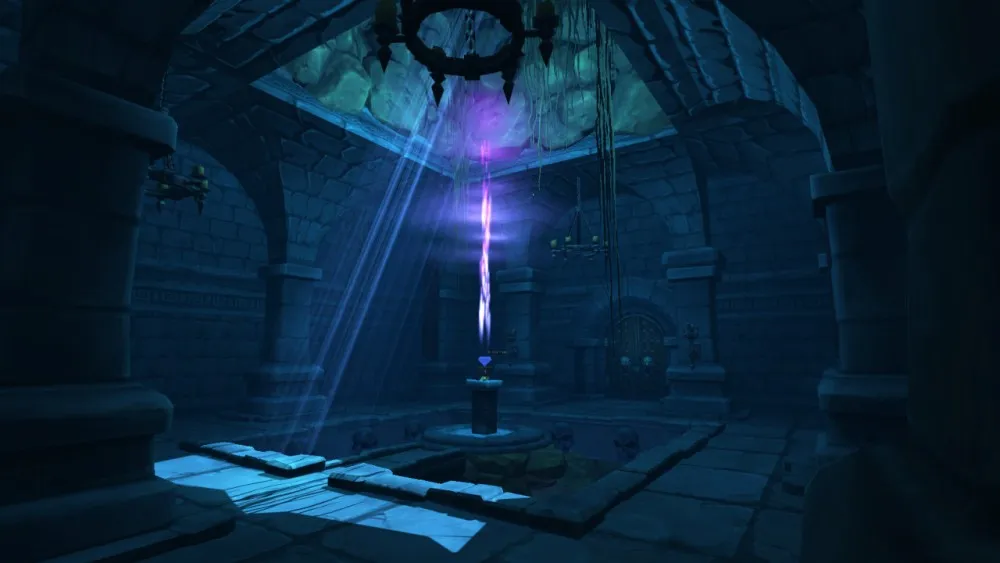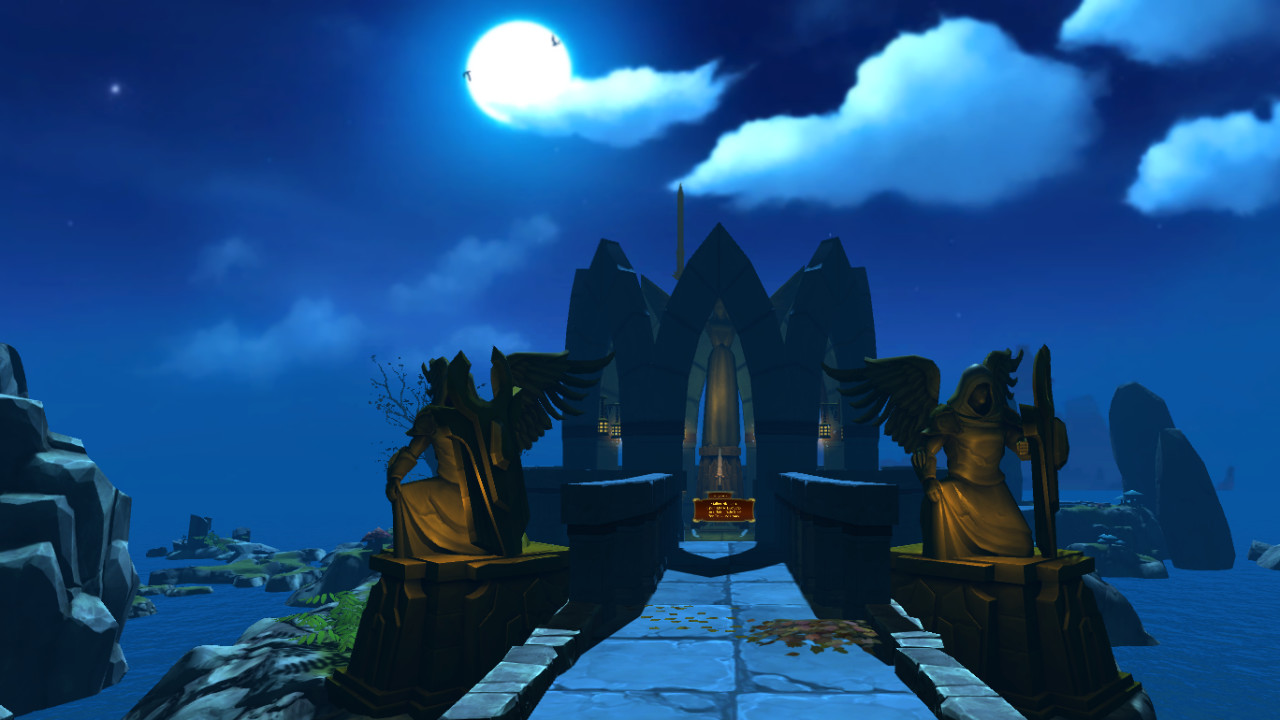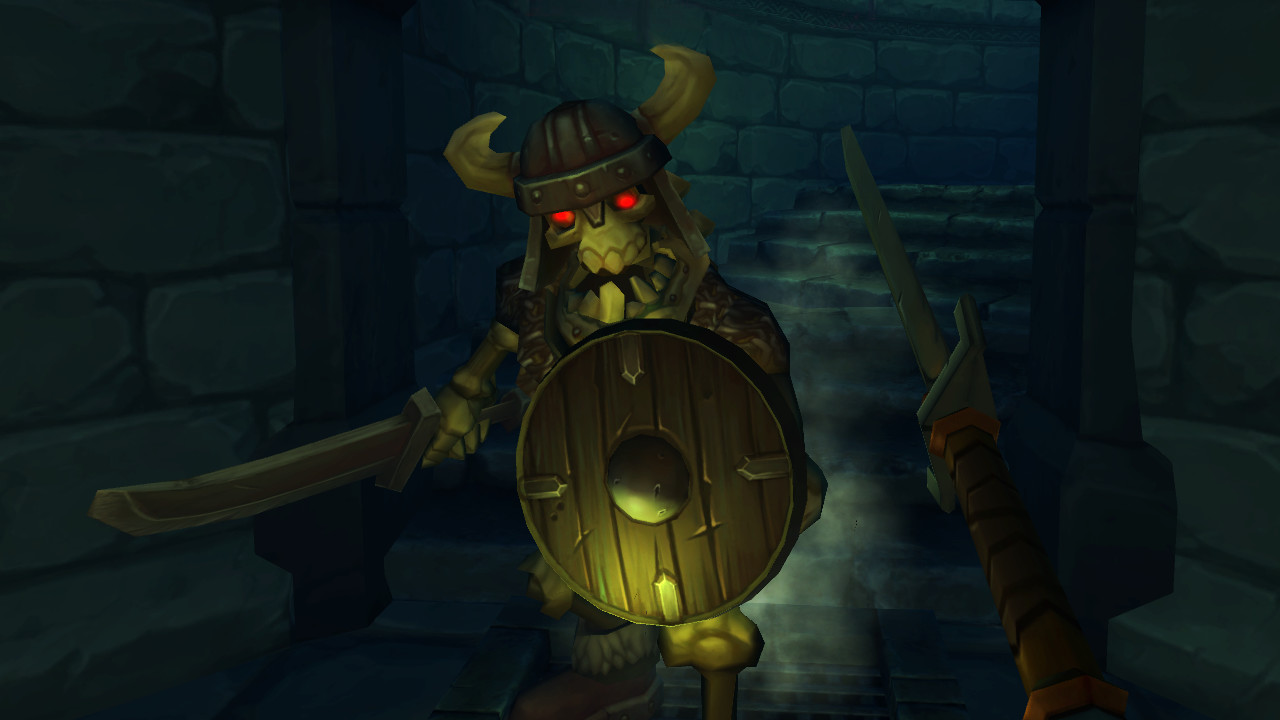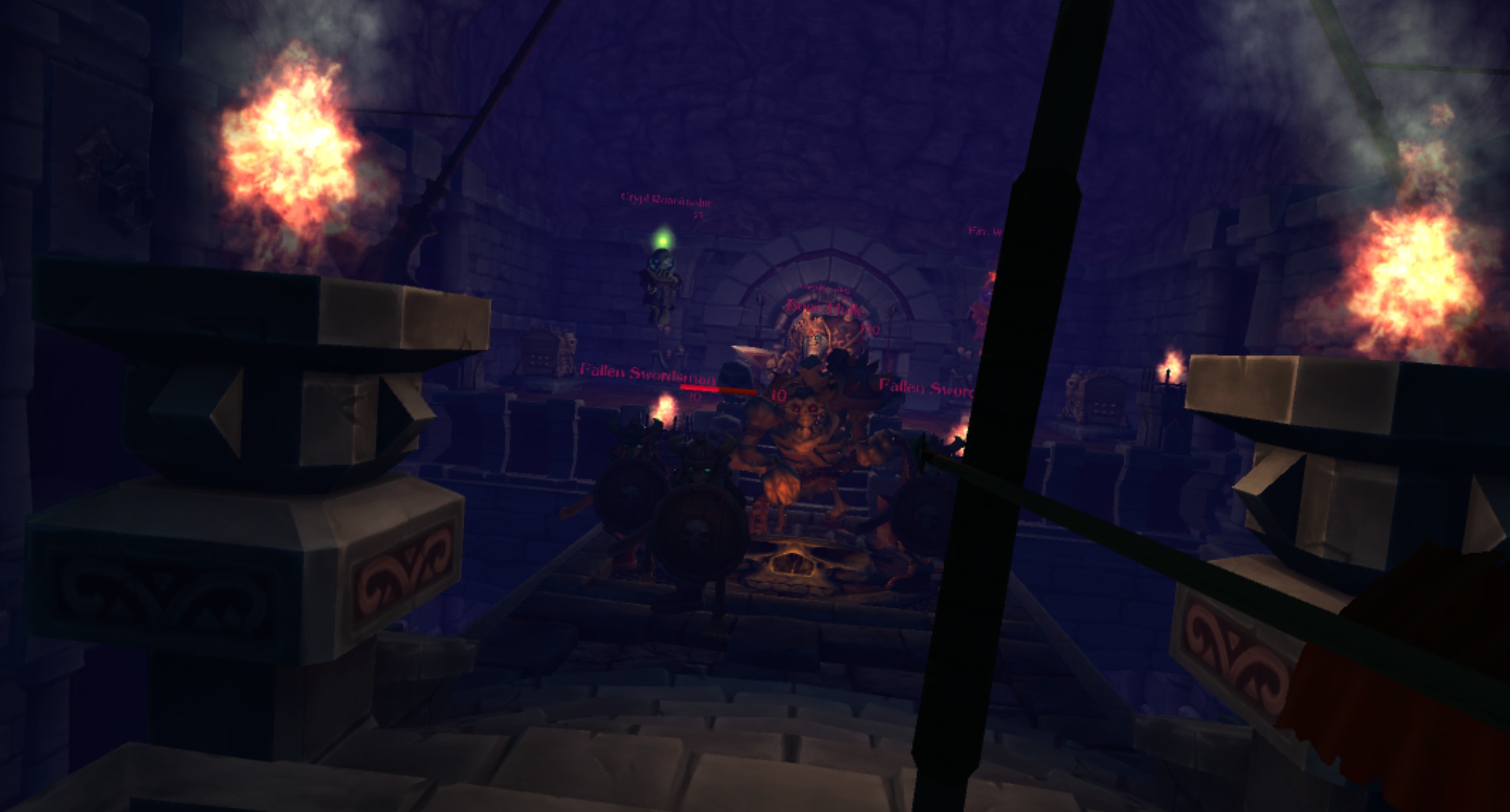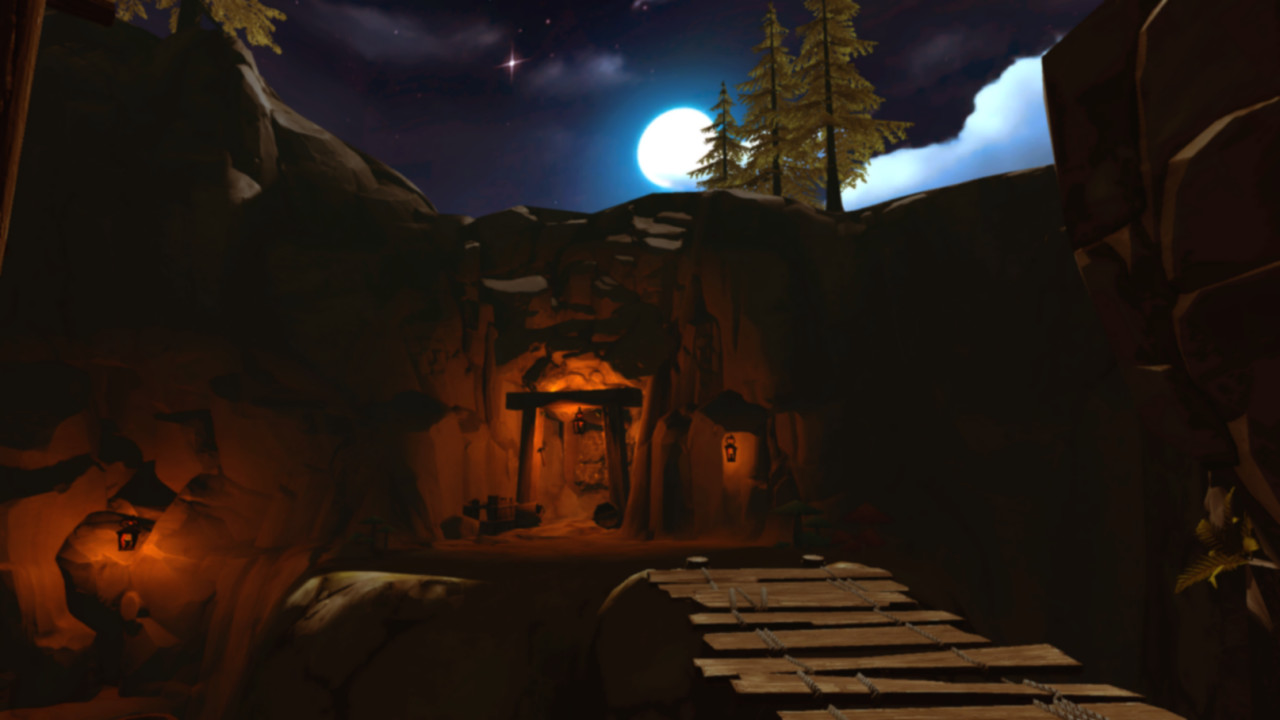The onset of modern virtual reality has elicited endlessly creative dreams from so many creative dreamers. 8 months ago, game designer and Valve alum Kelly Bailey bought an HTC Vive dev kit and started working obsessively on one of his own dreams: a VR adventure game influenced by role-playing staples like D&D and The Legend of Zelda. The result is Vanishing Realms: Rite of Steel, which is far and away one of my favorite launch games for the HTC Vive.
The game is a joy to play because I’m not relying on controller muscle memory and buttons to translate my actions. The Vive removes those layers of abstraction.
Vanishing Realms places you in the virtual shoes of an eager adventurer seeking treasure, artifacts, and victory in a mystical world populated by undead monsters. It’s light on narrative, but as veteran D&D players will tell you, the incentive to progress forward is the adventure itself.
Like several first generation VR games,Vanishing Realms would resemble an ordinary, even somewhat contrived action RPG if it was designed to be played traditionally on a flat screen. Fortunately, it’s been built from the ground up for Room Scale VR, and the result is a shockingly immersive experience that kept me riveted, fascinated, and on my guard from moment to moment.
Again we come back to the concept of presence and its crucial role in virtual reality. With Vanishing Realms, revolutionary hardware and thoughtful game design are married to make you feel physically present in this non-physical world. Your first encounter with an undead skeleton towering over you will leave you breathless but empowered. You’ll instinctively know how to react because of your interaction with the natural world. I’ve never had a monster swing a sword at my head before, but I reacted by clumsily by blocking the strike with my own sword, and then plunging my blade into his exposed chest. It was sloppy but effective, and probably mirrored how a rookie adventurer would feel in this exact situation!
Vanishing Realms has been built from the ground up for Room Scale VR, and the result is a shockingly immersive experience.
The game is a joy to play because I’m not relying on controller muscle memory and buttons to translate my actions. The Vive removes those layers of abstraction. Which button do I press to gaze at an enemy and block that fireball? Who cares! Just look at that archer and raise your shield. Is there an arrow flying at you? Physically dodge it or duck behind that stone column for cover. Need to restore your health? Pull the potion out of your inventory and drink it.
Through these natural actions, and augmented by the haptic feedback of the Vive motion controllers, we’re projecting a tangible sense of agency into the game world in a way that was previously impossible. And the world responds accordingly.
During a particularly heated battle, I was fending off two flanking archers, a healer, and a spellcaster (make that healer a priority kill with your bow & arrow!) who were guarding the coveted Dragon Wand. I emerged sweaty and out of breath from hiding behind trees, popping out of cover, dodging arrows, and just getting wrapped up in the heat of the moment. When you start dual-wielding swords and fighting increasingly brawny boss monsters, Vanishing Realms can even turn into a legitimate workout if you get carried away.
Since slaying monsters is priority #1, it’s refreshing to know you can’t cheese the system. If you try to hang back and kill a melee-bound enemy with a ranged weapon, they’ll eventually block or sidestep every shot, forcing you to close the gap and fight them on their terms. When they’re clinging to life, they’ll subsequently back off and even start recognizing the onset of your sword swings. It keeps things interesting without being artificially difficult, and I never felt as if I was outmatched. I simply had to adapt.
It’s astounding to me that one man created Vanishing Realms in 8 months
For getting around, Vanishing Realms implements the “blink” system which is becoming the standard for VR games. You simply point at an area you want to travel to and click the touchpad to teleport there, thus bypassing any potential for motion sickness. If you do have the space, you can just physically walk to navigate the dungeons and cobblestone hallways. The developer deserves praise here for enabling those with limited space to still enjoy themselves, although I’ll issue a caveat: it’s so easy to lose yourself in this game that between sword fights, dodging, and the sheer physicality of battle, a “standing room only” space will feel very restrictive.
Vanishing Realms is an Early Access title, with the developer targeting a final retail release in about 4 to 6 weeks. In its current form, the game comprises two chapters. The first focuses on adventure, loot gathering, and monster slaying, with the second chapter hosting some very challenging “Rite of Steel” trials. Here you have to use the battle knowledge and weaponry you’ve acquired to defeat 9 waves of enemies, and you’ll only have 60 seconds for each round.
Each chapter has its own personality, and a planned Chapter 3 should bring more cohesion to the overall package. There’s no firm release date for that, but it will be included in the Early Access purchase.
Vanishing Realms is a visceral, awe-inspiring VR experience steeped in intuitive, tactile gameplay.
It’s astounding to me that one man created Vanishing Realms in 8 months, because it resonates so strongly amidst a sea of HTC Vive launch content. It’s not without its minor problems, though. Examining the environment up close reveals flat textures, which slightly detracts from the otherwise perfectly achieved immersion. The inventory interface can also be a bit clunky sometimes, especially during the heat of battle when you have to toggle through various items or weapons. The plus side to simply looking down to access your inventory, however, is that there’s no UI clutter onscreen.
Finally, for better or worse, Vanishing Realms lacks any kind of progression system. It’s up to you to scavenge enough gold to buy the weapons you stumble across at opportune points. There’s a purity to this that I appreciate, further increasing the realism, although players craving a deep, menu-driven upgrade and leveling system may be disappointed.
Studio: Indimo Labs
Platform: HTC Vive
Price: $19.99
Comfort Rating: Moderate
Release Date: April 5th, 2016 (Early Access)
—
I can easily say without reservation that Vanishing Realms is a visceral, awe-inspiring VR experience steeped in intuitive, tactile gameplay. It has left me satisfied but selfishly craving more. That it was created by a single developer in 8 months is nothing short of extraordinary, and I believe this paves the way for a surge of successful, micro-sized development teams making breakout games for virtual reality.
Reviewer’s Note: I spent about 3.5 hours playing, which included a bit of backtracking after being decimated by some particularly pesky spellcasters. A pre-release review code was provided by Valve.
Read our Game Review Guidelines for more information on how we arrived at this score.
— Article contributed by Jason Evangelho

